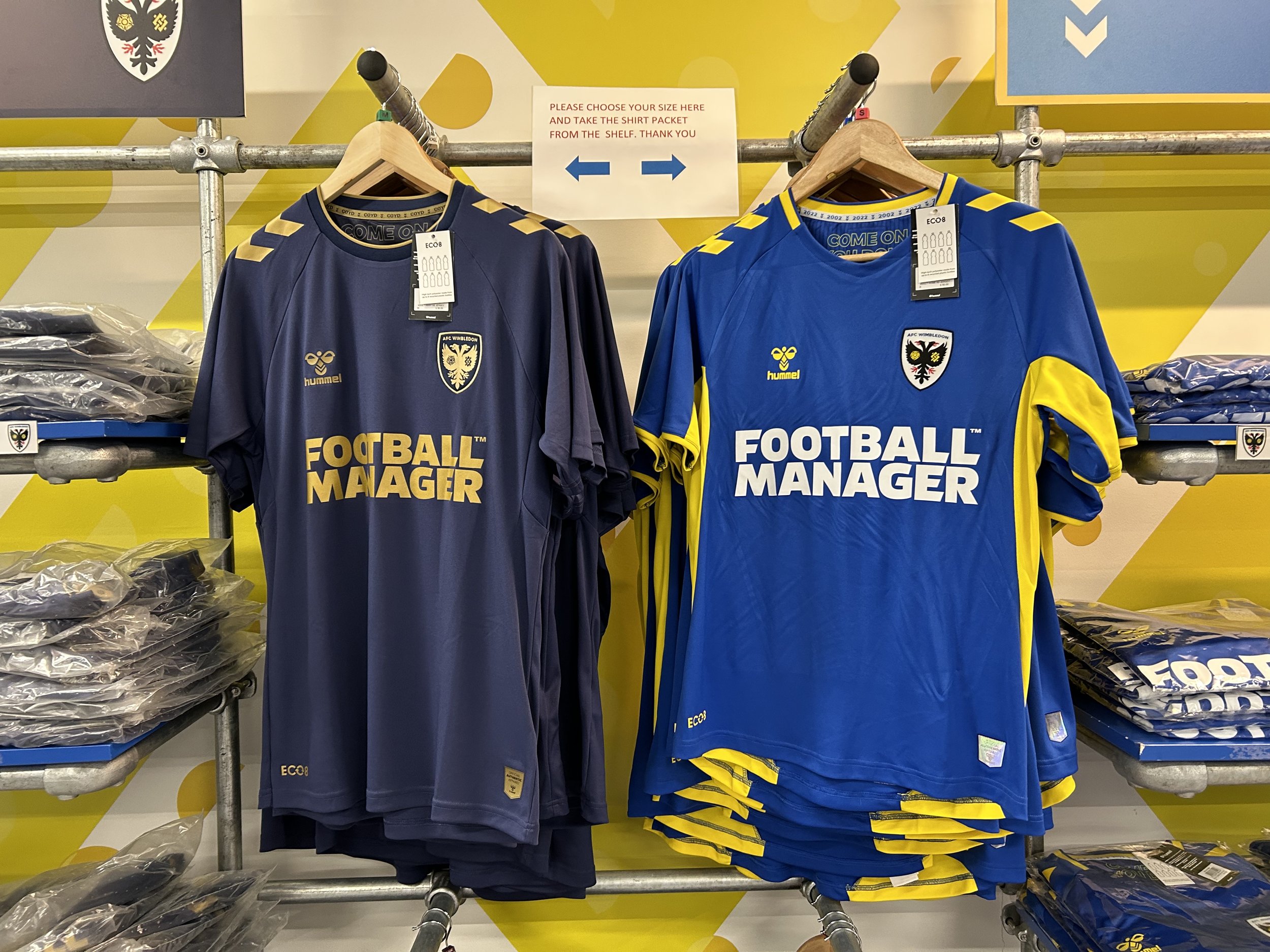AFC Wimbledon 2-3 Stevenage- 2022/23 Matchday Blog #45
Joe Marshall- @AllSportJoe
There are certain football stories that permeate the generations. England’s World Cup glory in 1966, or Manchester United’s treble in 1999 are two obvious examples. Another famous footballing tale is that of Wimbledon’s “Crazy Gang” of the 1980s, a cult era that culminated with their highest high, defeating Liverpool to win the FA Cup in 1988. These anecdotes pass through history and are moulded and twisted as decades pass by, however, it is unlikely that these stories will ever disappear from footballing folklore, despite how things may massively change for those clubs involved.
I found myself at Plough Lane on this cold Tuesday night at the end of February, as the shortest month of the year brought with it my longest footballing trip of 2022/23 so far, as I headed south from Manchester for a few nights in the capital. The first night of my venture to the ‘smoke’ was capped with a thoroughly entertaining Sky Bet League Two match between the fan-owned re-incarnation of that famous club, and promotion chasing Stevenage.
Stepping off the tube from Wimbledon Park station, I headed down hill in the general direction of the ground. AFC Wimbledon are back to playing their home games at Plough Lane, after many years spent elsewhere, and boy do they let you know about it! Plough Lane carries an air of sacrality, with street signs taking pride of place on each corner of the crossroads where it joins with Durnsford Road and Haydons Road. The locality is littered with nods to ghosts of football past, even the flats that welcome you onto the famous street are adorned with the names of former players and managers.
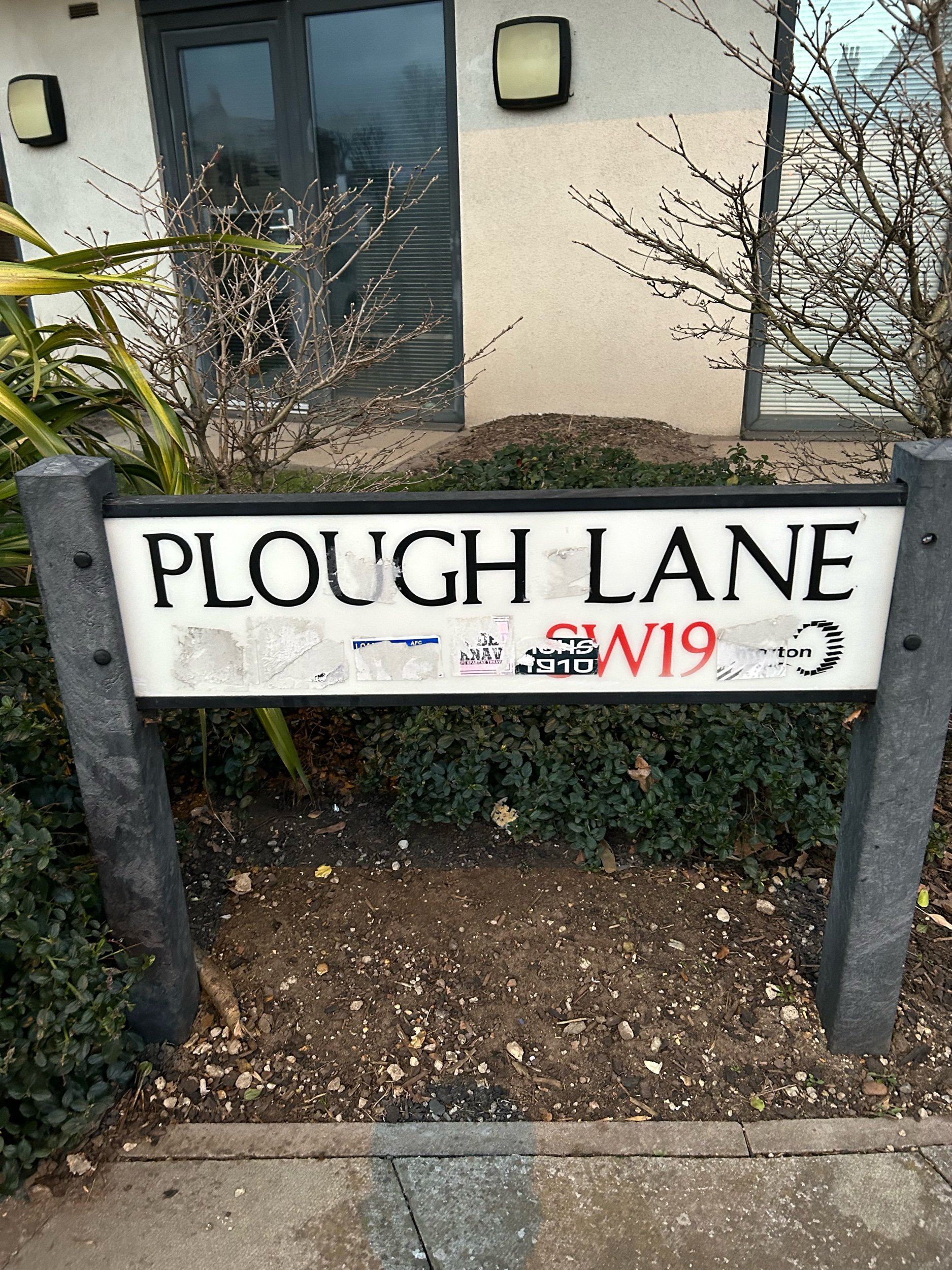
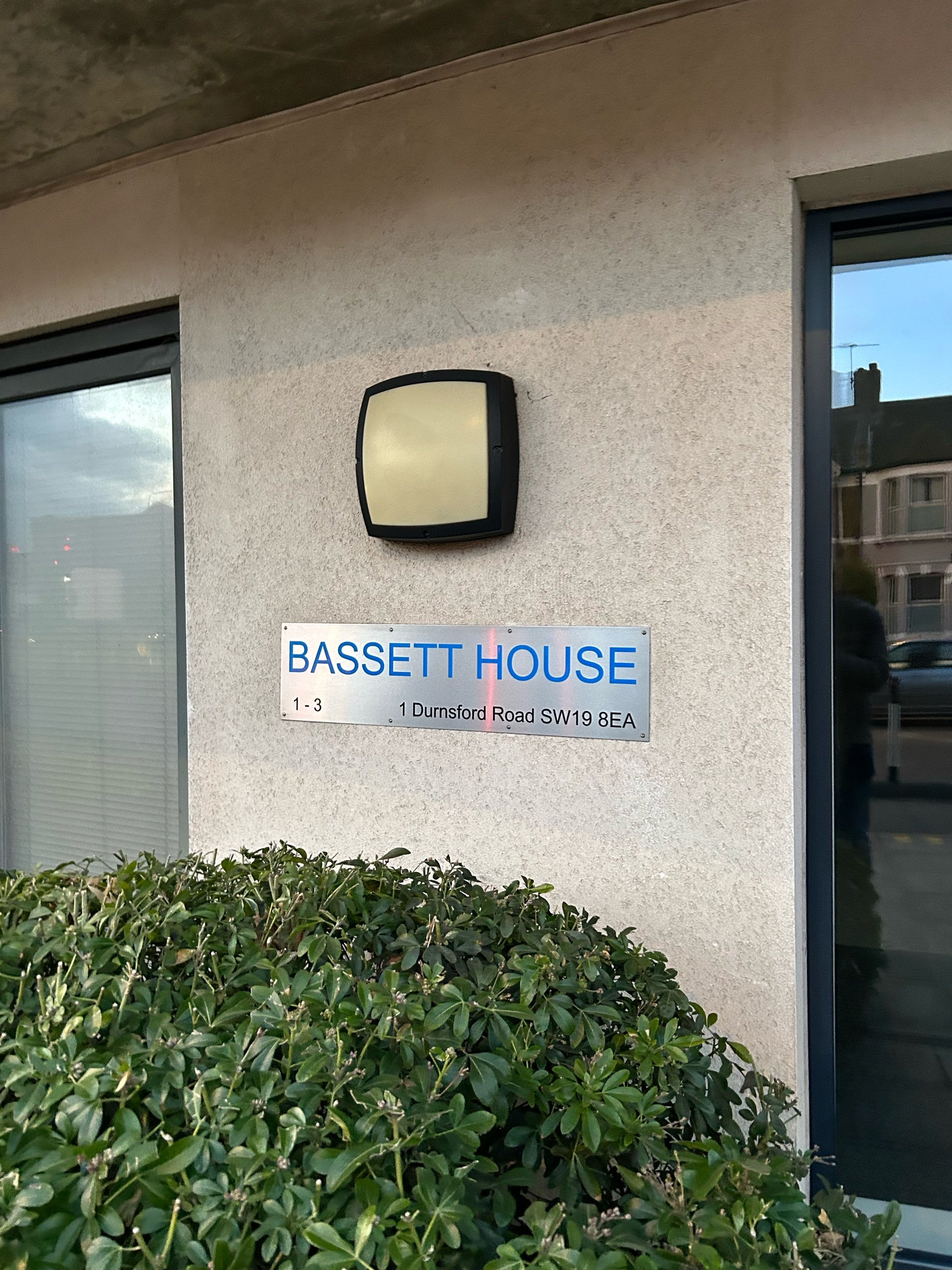
Plough Lane
The end of February meant that the evenings are starting to become lighter, but when I arrived in the area with kick off still a couple of hours away, the floodlights were still visible as I walked down the hill. I still get a comforting feeling seeing a floodlight towering above a skyline, and despite the tall buildings surrounding the ground, they still rose highest.
The newly built Plough Lane opened in November 2020, however it wasn’t until the 18th of May 2021 that supporters could witness a game there for the first time. It’s first competitive match was a 3-3 draw with Bolton at the start of AFC Wimbledon’s 2021/22 League One campaign.
Built on the site of the old Wimbledon greyhound stadium, the ground has a capacity of 9,215. The modern exterior is a far cry from the tired facade of the former dog track, with a lot of time and money clearly invested in making it look like something straight out of Grand Designs.
Inside the ground, the place is clean and well kept, providing evidence that it is a newly built stadium. There are other reasons that the ground has an air of modernity to it. Modern British grounds tend to follow the same template, and this ground is ever so close to falling into that trap. However, labelling it as a ‘bowl’ would do a disservice to the true layout of the “Cherry Red Records Stadium” (to give it its proper title). The majestic main stand is incredibly unique, spanning two tiers and is erected separately from the three other ends, holding an impressive 4,267 spectators. Meanwhile, the home fans behind the goal in the South Stand are housed in a safe standing terrace with a capacity of 1,092. The seats here also appear to be detached from those of other parts of the ground.
It seems, then, that the only ‘bowly’ areas are the East Stand (where I was sat), and the North Stand, which is home to the away allocation. These are both seated, with capacities of 2,391 and 1,465 respectively. These are by far the most mundane areas of the ground, and possibly contributed to the negative perception I had of the ground before my visit, as all the reviews I had heard had come from away fans. If given the opportunity to explore the excellent facilities elsewhere in the ground, their opinions may have been slightly different…
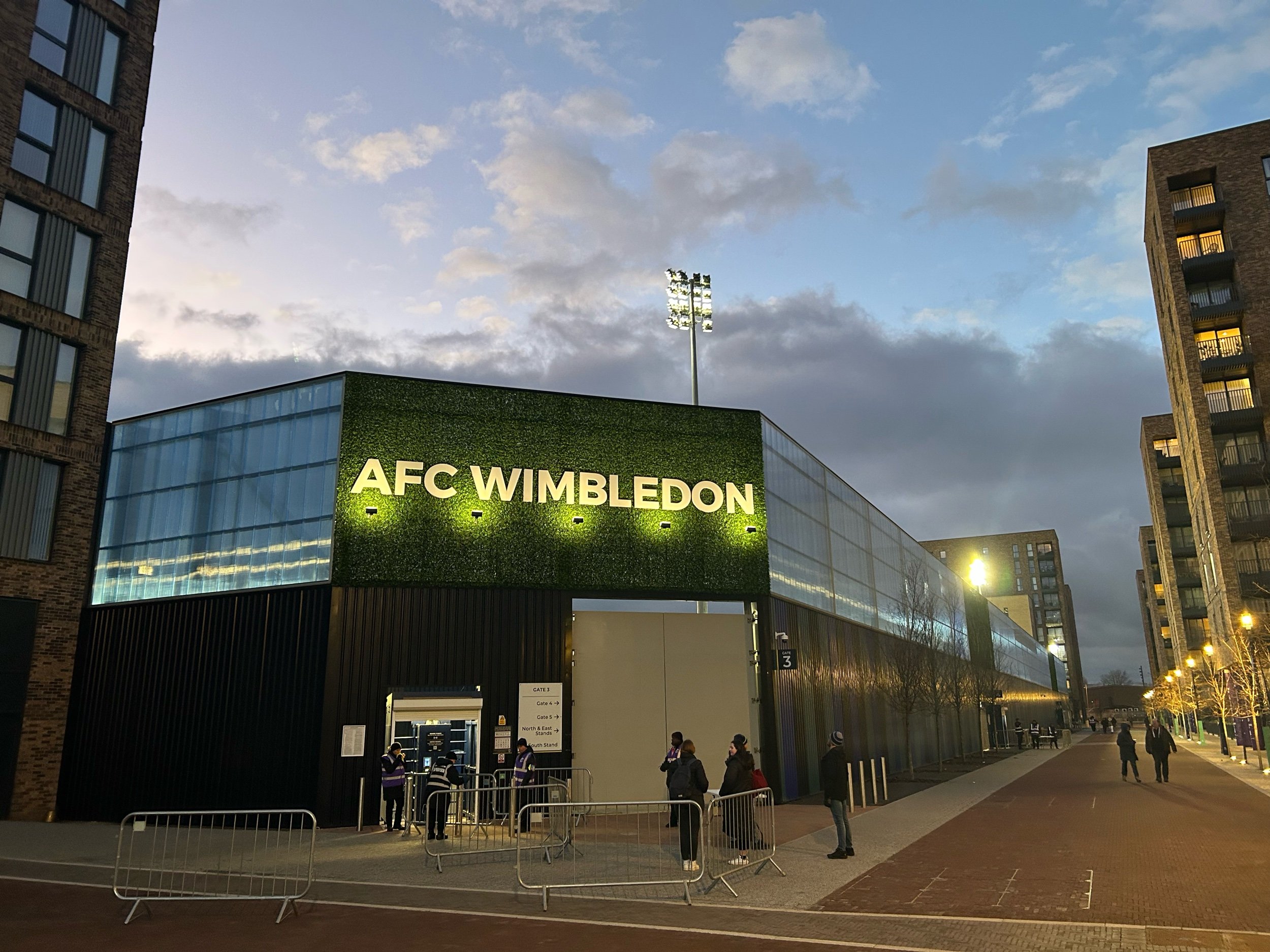
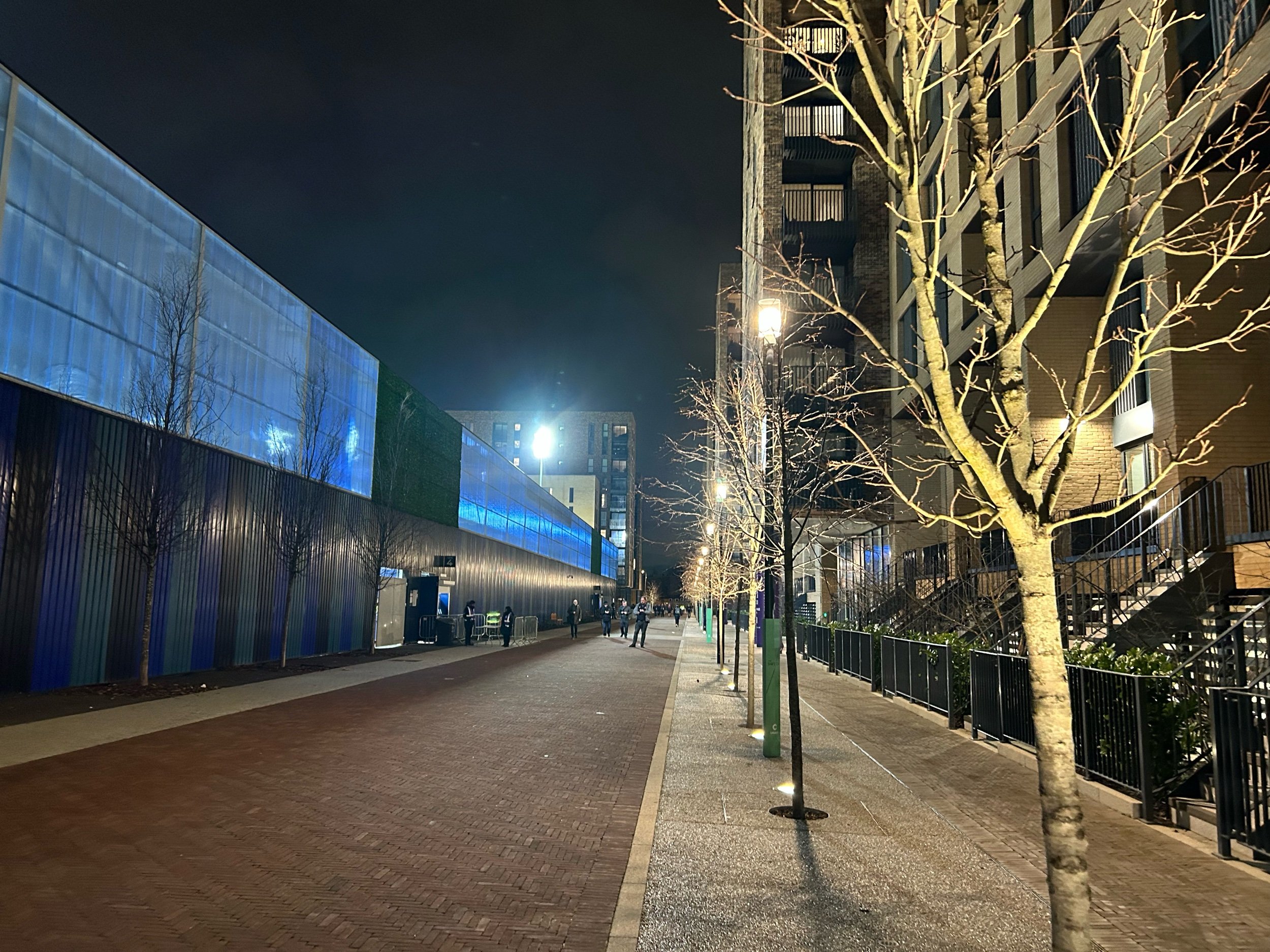
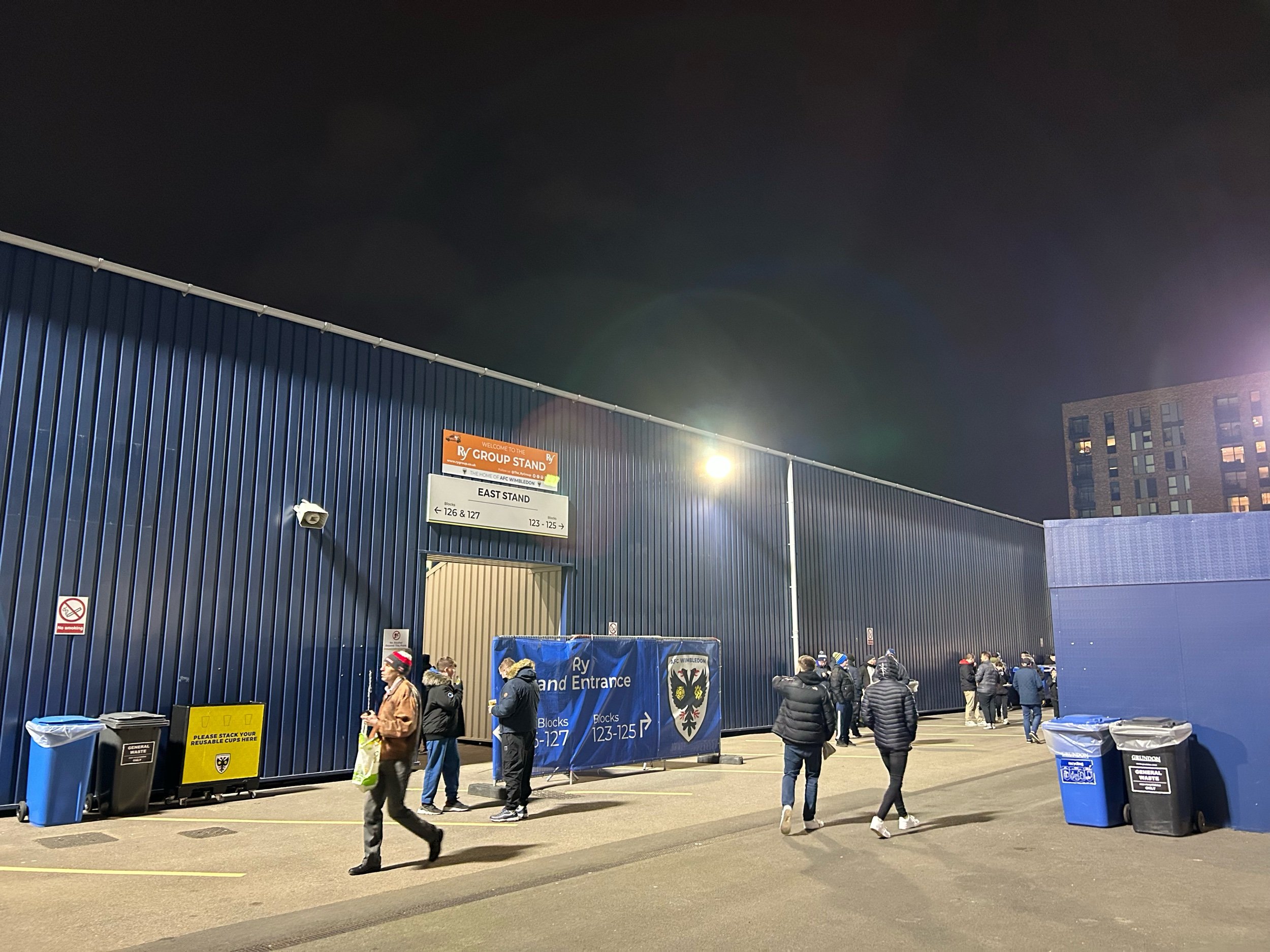
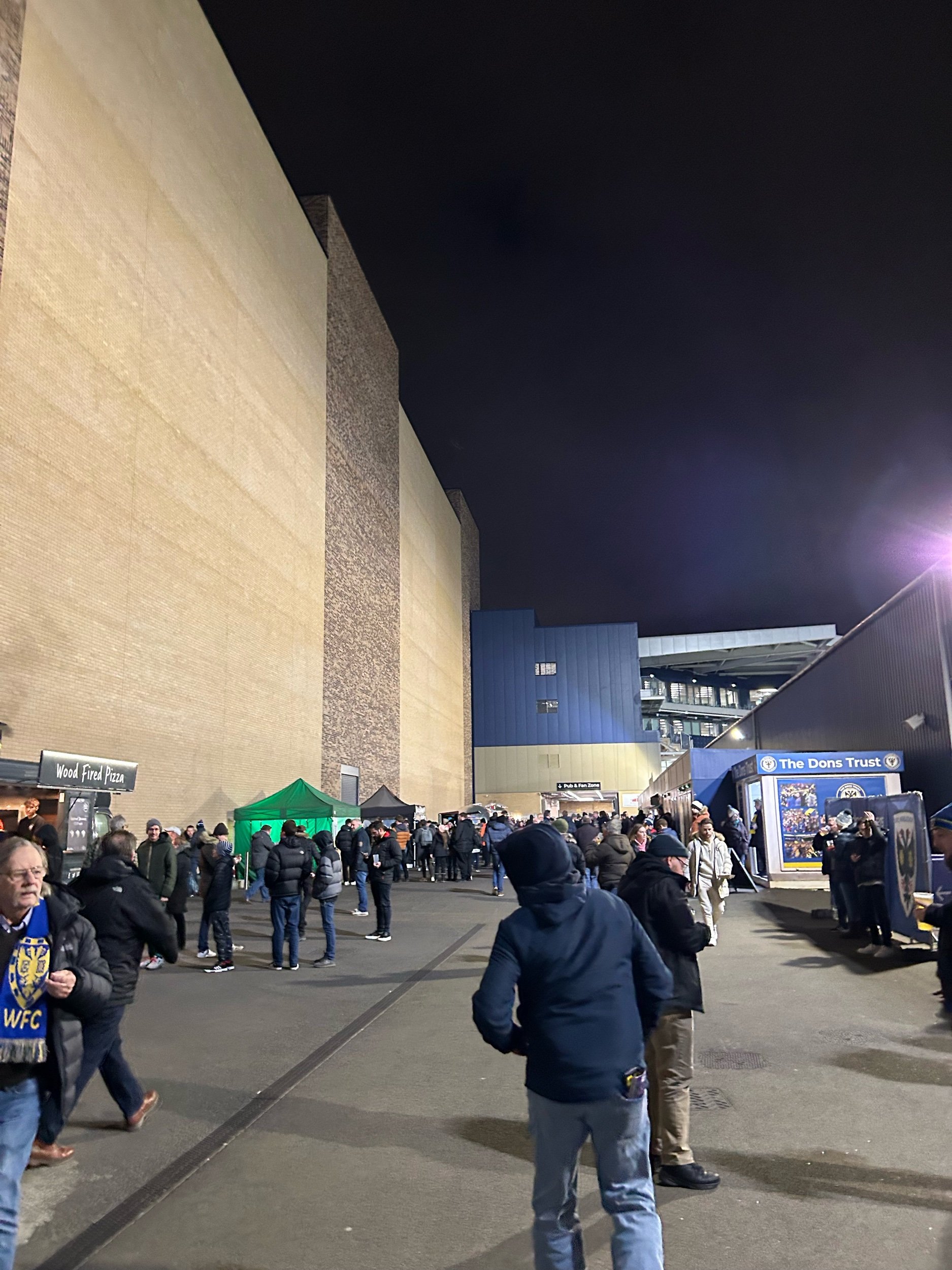
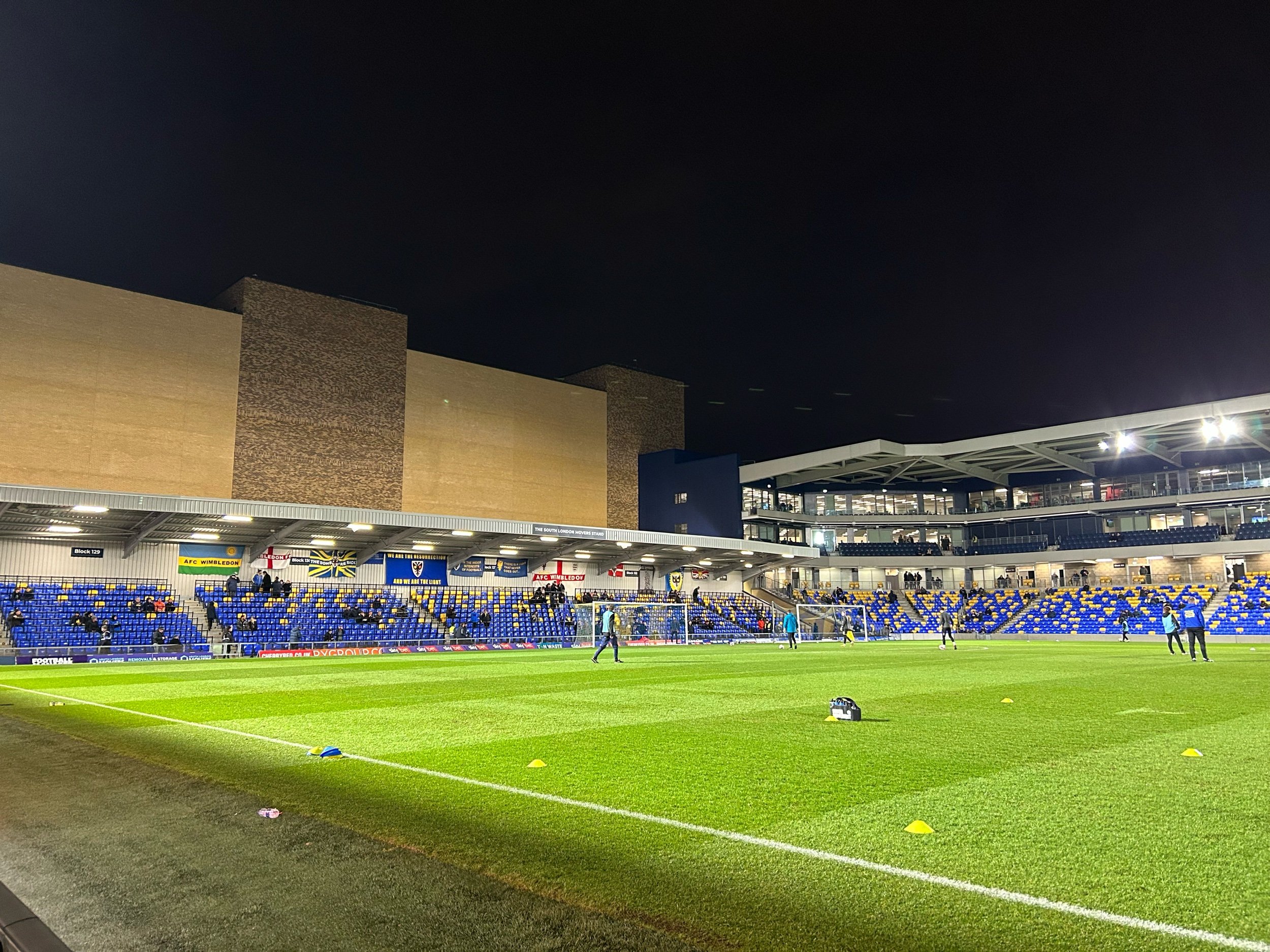
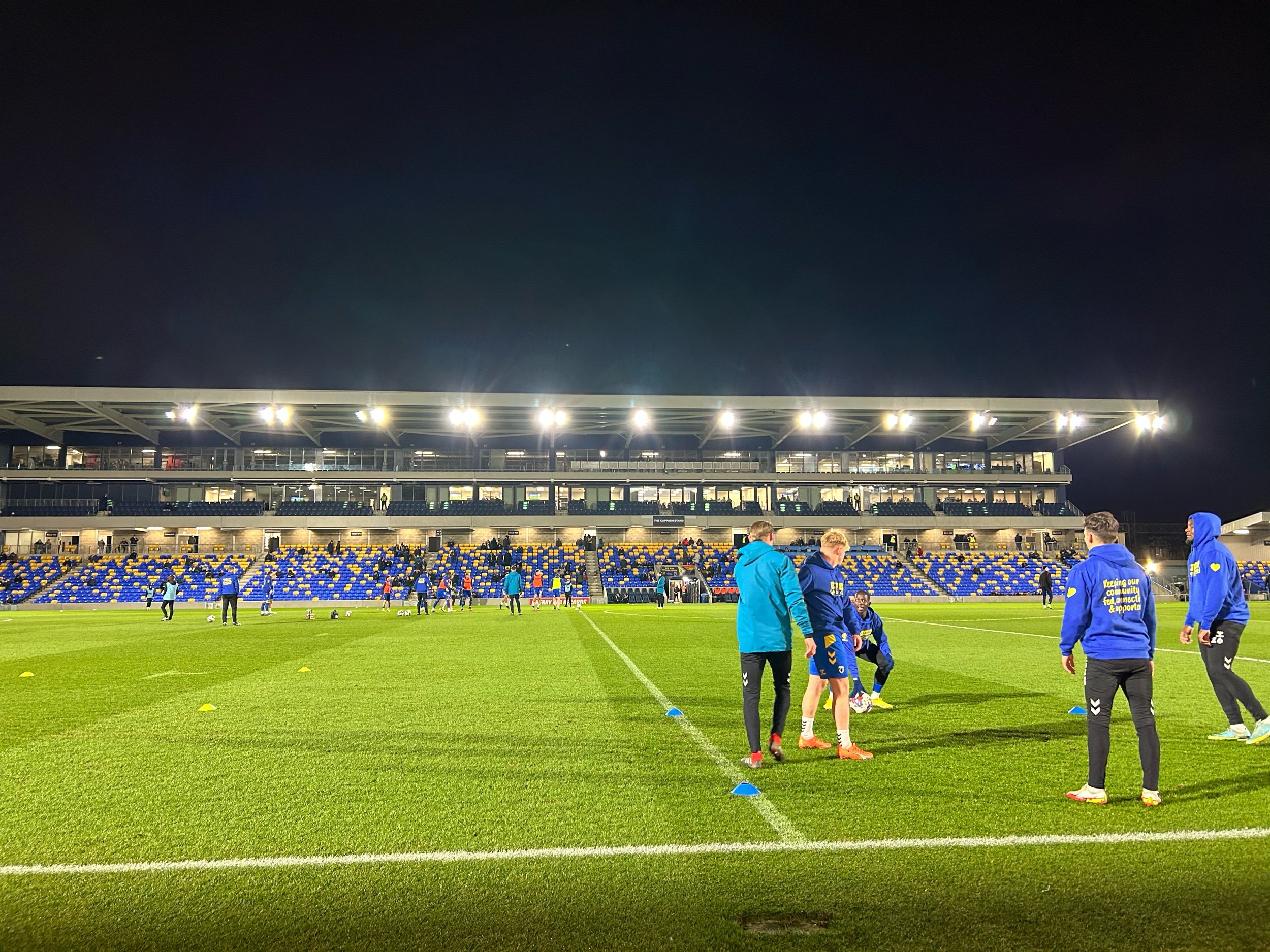
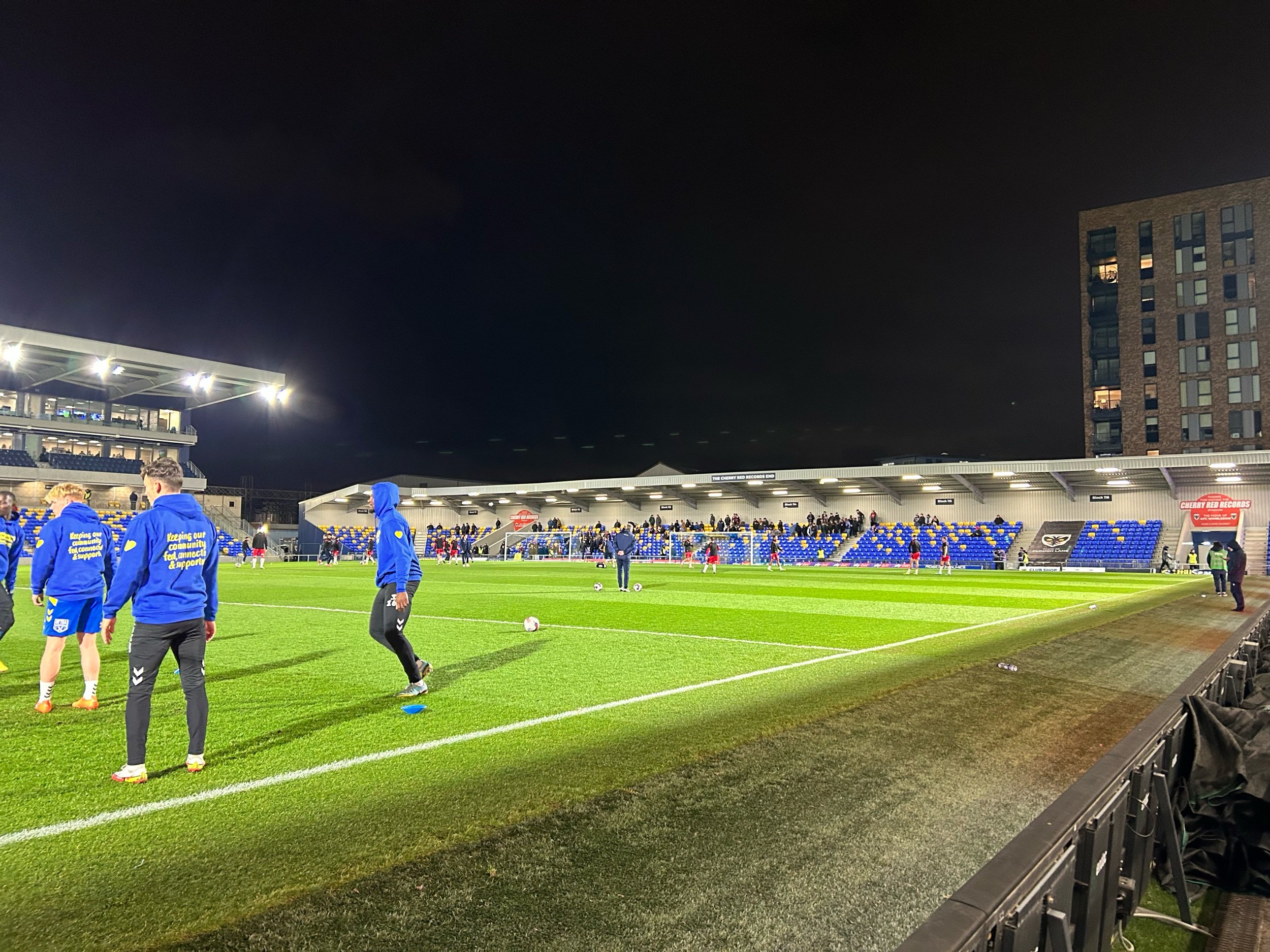
The Plough Lane Experience
Outside the ground I was able to grab not one, but two magazines. Firstly, I picked up a matchday programme, which cost me £3 and contained nearly 80 pages worth of content, great value! Secondly, I snapped up a lesser-spotted faznine, a part of the fabric of football fan culture that is rapidly going into extinction. For only two pounds, I felt like I had to contribute my part into maintaining this terrific tradition.
The elephant in the room is the ticket price. It is not a secret that costs in English football are spiralling out of control, and some would argue it has already veered off into a ditch and burst into a ball of flames. I paid £27 for the priviledge of sitting in this freezing part of Southwest London for a game of fourth tier football, but I put my faith in both teams to serve up something that would resemble value for money.
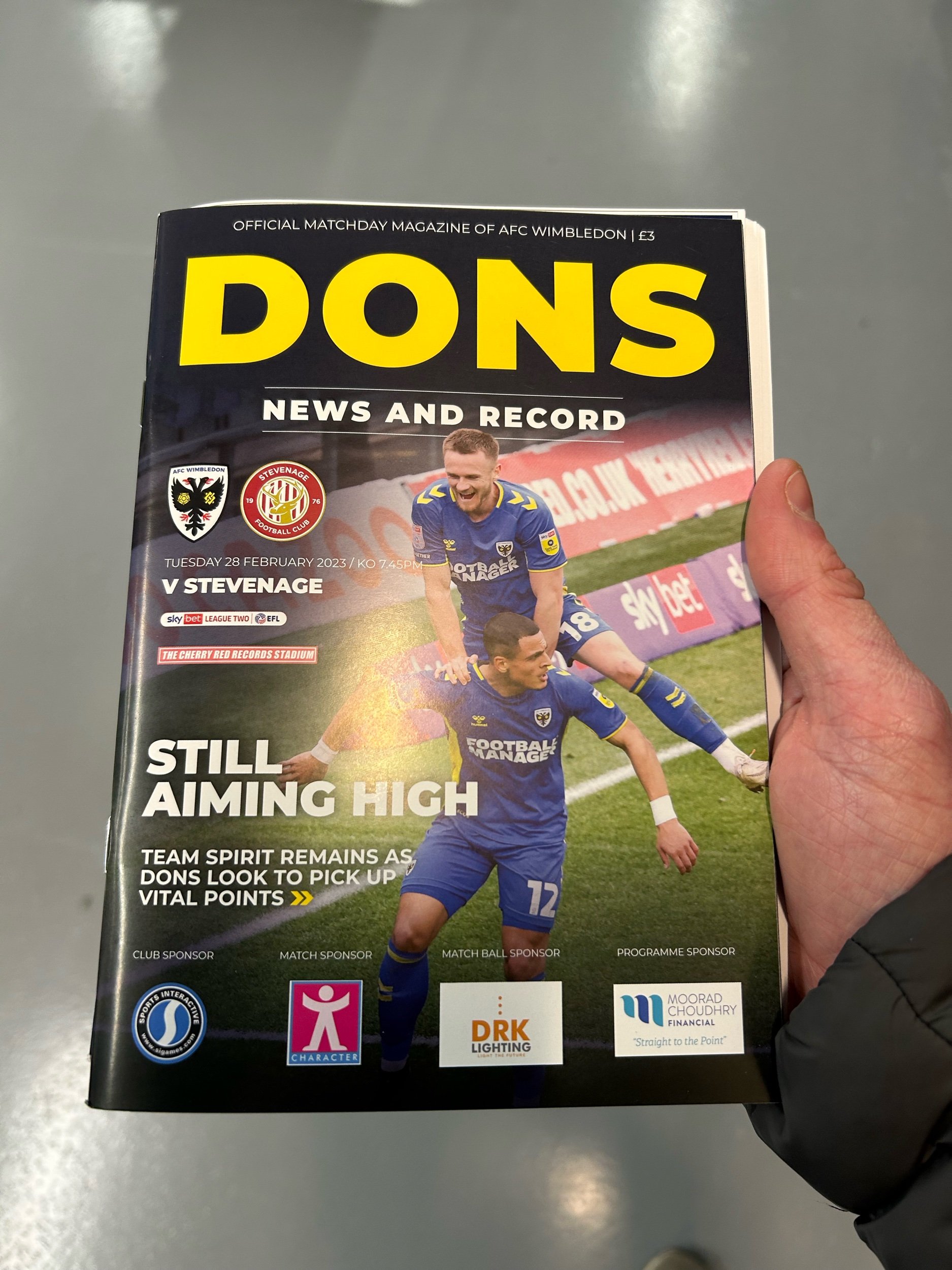

Before going into the ground itself, I took the time to look around the club shop, which gave me a timely reminder of AFC Wimbledon’s quite frankly shameless combination of home and away kits, which I am sure were not deliberately designed to fleece as much money out of their fans as possible. I’m sure.
After those small rants, I can now turn to the more positive aspects of the AFC Wimbledon experience. Inside Plough Lane, home fans are treated to an outstanding array of food and drink options. It is clearly a very family orientated club, as demonstrated by their EFL Family Excellence awards in recent times.
In my hungry state, I elected to eat at the first place I saw, a more traditional football food outlet, serving pies and pints. The chicken, gammon and leek pie I had was possibly the best pie I have ever had at a match, and I honestly don’t think I am exaggerating. Despite being incredibly enthused by my pie, after having a little wander around, I immediately regretted my choice, when I was presented with wood-fried pizza, kebabs and burger outlets.
The pint of Stella I had inside the ground only cost me £5.50, which in comparison to some grounds I’ve been to, isn’t actually so bad. No need for the ‘Neil Warnock at the Den’ meme, then.
The Teams
AFC Wimbledon
Many phoenix clubs have been set up in England over the decades, but none have been established in more controversial and well-publicised circumstances than AFC Wimbledon. For my generation, they are the original and most successful phoenix club, however slightly older fans may recall the demise and subsequent rise of Accrington Stanley. With both the Dons and Stanley eventually making it into the Football League (and both making the third tier), both teams have achieved the unthinkable, however it took AFC Wimbledon just 10 years to get into the Football League from inception, and Accrington nearly 40.
The controversial relocation of Wimbledon FC to Milton Keynes is a tale told a thousand times, but it is worth bearing in mind how much of a colossal story it was at the time. The town of Milton Keynes was expanding, and businessman Pete Winkleman began a development in the area which included the construction of a football-league standard stadium. After offering it to various clubs across London, Wimbledon chairman Charles Koppel announced that he would be uprooting his club, and moving them 56 miles north. This decision was confirmed by the FA in May 2002, and this triggered an exodus of supporters away from the franchise that their club was about to be turned into, and towards what would go down as a monumental project.
This move triggered the dawn of a new era in Wimbledon’s history. MK Dons now play third tier football, and despite a brief flirt with the Championship, have done for most of their history since the move. Phoenix club, AFC Wimbledon meanwhile, have undertaken one of the most incredible journeys ever seen in English football.
Every great journey must have a beginning, and for AFC Wimbledon, that was a 230-man trial on Wimbledon Common, as they attempted to assemble a squad. In August 2002, with their side built, and manager Terry Eames appointed, they began their first ever season. Somewhat surprisingly, despite their now notoriously rapid rise through non-league, they did not actually secure promotion in their first season. In fact, it took until the end of their second season in the Combined Counties Premier League to secure promotion, by which times Eames had been removed from his post for gross misconduct.
Now under the management of Dave Anderson, they were successful at the first time of asking in the Isthmian League First Division, and in the process set a new record of 78 games unbeaten.
It wasn’t until the 2007-08 season that AFC Wimbledon escaped the Isthmian League Premier Division, gaining promotion to the Conference South under the management of Terry Brown. Promotion wasn’t achieved in the same style as their league title successes previously, they had to do it the hard way, via the playoffs. A 2-1 win over Staines Town in the playoff final ensured they secured a place in the sixth tier ahead of the 2008-09 season.
They won the Conference South title at the first time of asking, finishing as champions with 88 points, earning themselves a place in the Conference Premier. It took them two seasons to climb out of non-league football’s premier division, eventually gaining promotion in 2010-11, via a 2-1 win over Luton Town in the playoff final. This capped a phenomenal rise through non-league, representing five promotions in nine years, demonstrating the power of fan ownership.
AFC Wimbledon secured promotion to the Football League via a penalty shootout in the playoff final.
Credit: Action Images/Carl Recine
During their time in the Football League, they have spent time in Leagues One and Two. They began life as a league club with some lower mid-table finishes in League Two, but climbed into League One in 2016 thanks to a playoff final win against Plymouth Argyle. Once in the third tier, they competed against MK Dons for the first time in a league fixture. Although they lost the first game at Stadium:MK, they won the return fixture at their then home; Kingsmeadow, 2-0. By the end of that season, it was confirmed that AFC Wimbledon would begin the next campaign playing in a higher division that their arch rivals for the first time, thanks to relgation for the Milton Keynes side.
They now reside back in League Two after spending six seasons in League One, and prior to this game found themselves sat in 15th place on 42 points. As is the nature of League Two, this means they are only ten points away from the playoff spots, which may seem a relatively large gap, but the league is genuinely unpredictable, so only a fool would write their season off at this stage.
Their existence to date has not passed by without controversy, though. In their early years, they groundshared the Kingsmeadow stadium with fellow non-league side Kingstonian. The ground initially belonged to Kingstonian, however, AFC Wimbledon bought the ground from them in 2003, turning the former owners into merely tenants. However, in 2015, the Dons struck a deal with Chelsea FC to sell the ground to the Blues, with the view of the stadium becoming the home of their womens and youth teams. This deal meant that Kingstonian were without a ground of their own, and other fans were not slow to point out the hypocrisy of this; AFC Wimbledon, of all teams, purchasing a struggling team’s ground and ultimately displacing them, rendering them homeless.

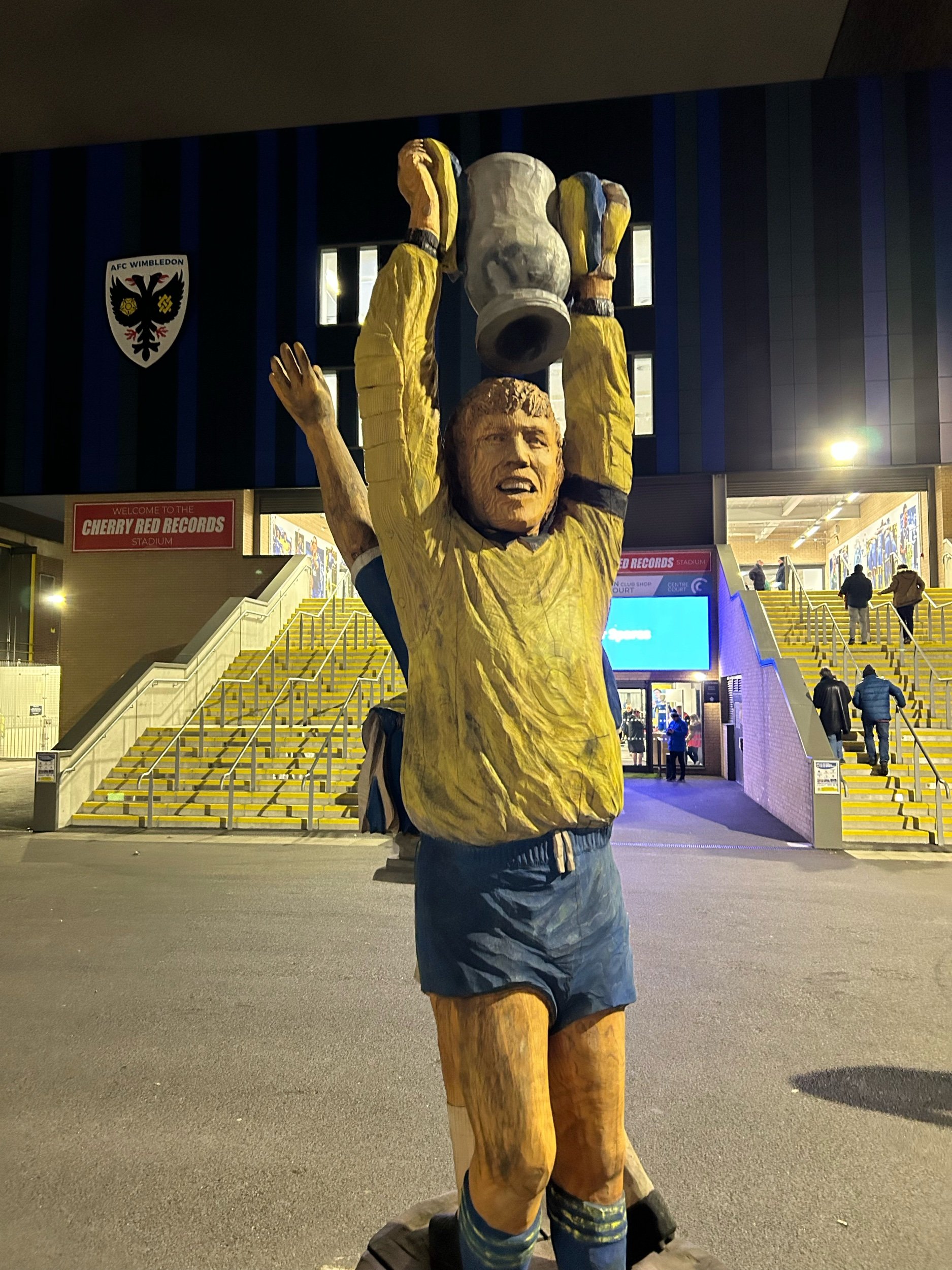
Stevenage
Sitting in the promotion places of League Two is a welcome change for Stevenage FC, who have spent the last few years clinging onto their EFL status by the skin of their teeth.
Stevenage Borough were formed out of the ashes of Stevenage Athletic, a team that played their games at Broadhall Way, but went bankrupt in 1976. Although formed relatively quickly after the demise of Athletic, Borough didn’t join a competitive league until the 1980-81 season, in which they joined the United Counties League. They were immediately successful, with their first competitive season yielding the Division One title as well as the United Counties League Cup.
They remained in the UCL Premier for three seasons until 1984, at which point they joined the Isthmian League Division Two. They achieved promotion to Division One in their second season, but were quickly relegated back to Division Two after two uninspiring seasons. However, once they were promoted back to the Isthmian League Division One again in 1991, they did not look back, amassing another three league titles in the subsequent five seasons. Unfortunately, one of these titles did not lead to a promotion, as Borough’s charge through the non-league pyramid was halted at the final hurdle, when despite winning the Conference Premier, their Broadhall Way stadium was deemed inadequate for the Football League, thus preventing their ascendency into the fourth tier.
The wait for Football League status was to continue for another 14 years, when they were eventually crowned champions of the Conference Premier in 2009-2010 with 99 points. This promotion had followed many years of consistent top half finishes and near misses, including a play-off final loss to Carlisle United in 2005.
The eventual promotion to League Two was achieved at a relative canter, securing a Football League berth with two games to spare, eventually winning the league with an 11 point cushion.
In the period between their blocked promotion and their actual one, the club achieved success in the FA Cup and FA Trophy. Stevenage reached the FA Cup Third Round in 1996-97, where they went down 2-0 to Birmingham City at St. Andrews, (due to Broadhall Way being deemed unsuitable) but followed up that cup run with an even better one the following season. After victories against Carshalton, Cambridge and Swindon, they faced Premier League giants Newcastle United. The tie was played at a now-adequete Broadhall Way, with a temporary stand built to satisfy the powers that be. The game finished in a 1-1 draw, and Borough earned a replay at St James’ Park. In the subsequent match, they were unlucky to lose 2-1, in a game shrouded in controversy, with an Alan Shearer opener that may not have counted if the game was played in an era of goal-line technology.
No such hardships were to be found in the FA Trophy, with heaps of success to be found in the mid-2000s. Their first taste of the Trophy final was to be disappointing, losing to Yeovil Town at Villa Park. However, later in the decade they became winners of the competition with a dramatic comeback victory against Kidderminster Harriers. Not only was the 3-2 triumph played out in front of a record crowd for an FA Trophy final, but it also meant that Borough were the first team to win silverware at the new Wembley. Two seasons later, and Stevenage were winners again, this time defeating York City 2-0 at the national stadium.
Stevenage celebrate lifting the FA Trophy in 2007
Credit: PA Images
Since promotion to the Football League, the club has made some significant changes, not least, dropping the ‘Borough’ from their name and adopting a modern, minimalist badge, the kind that in my opinion, are among the worst things in modern football.
In their first season as a Football League club, they climbed to new heights, clinching another promotion via the playoffs, this time at Old Trafford against Torquay United. They also avenged the Newcaslte defeat of 1998, by knocking the Magpies out of the FA Cup, at the same stage as that infamous tie of the 90s.
The club seemed to be going from strength to strength once in League One, finishing sixth and reaching the playoffs in their debut season in the third tier. They were defeated by an aggregate score of 1-0 against Sheffield United in the semi-finals, after the Blades themselves were just pipped to automatic promotion by another team. The 2011-12 season also saw more FA Cup success, as they reached the fifth round for the very first time, eventually losing 3-1 against Tottenham.
However, since then, they haven’t been able to replicate the success of this particular period. Following relegation back to League Two in 2014, finishing a dismal 24th, they have been fourth tier mainstays, but all too often finishing as regular members of the relegation fight. Only the demise of Macclesfield in 2019-20 prevented relegation back to the National League. However, this season, has seen a tremendous upturn in form under the guidance of Steve Evans, which has placed them firmly in the race for automatic promotion back to League One.
The Match
I began watching this match from the very front row, thanks to the way that I allowed the AFC Wimbledon online ticketing platform to pick my seat for me. The view wasn’t terrible, but it meant that any time a steward walked past, my view was immediately impeded, and any photos I took were filled up with the back of the advertising hoardigs.
In a cagey opening, The Dons had the better of the chances, although it admittedly it is a bit of a stretch to label them as ‘chances’. Despite being in the automatic promotion places, Stevenage’s form going into the game was worrying, and the lack of confidence was reflected in their play, however AFC Wimbledon were unable to capitalise on this.
As the game wore on, I began to scan behind me for empty seats, and after about 30 minutes, seized my opportunity and pounced on a vacant chair about 6 rows back, which gave me a much improved vantage point.
The atmosphere was lacking throughout the first half, with most of the noise coming from the 400 strong travelling contingent, with the home fans unable to convert their greater numbers into a more vocal backing. As much as the posturing and the faux hooliganism you get when home and away fans are housed next to each other can be a little cringey, it does add to the atmosphere, but inside Plough Lane, the noisiest bunch of home supporters are situated in the stand on the opposite side of the ground to the away fans. This means that the back and forth chanting that can add to an atmosphere was lost. Its easier to police though, I guess.
The opening goal of the game was scored by the home team. A cross from the far side sailed over the heads of the Stevenage defence as well as goalkeeper Toby Savin, who with the worst piece of nominative determinism I’ve ever come across, misjudged the flight and missed his claim. This allowed the unmarked Ali Al-Hamadi to cushion a volley into the unguarded net to give the hosts the lead just before half time.
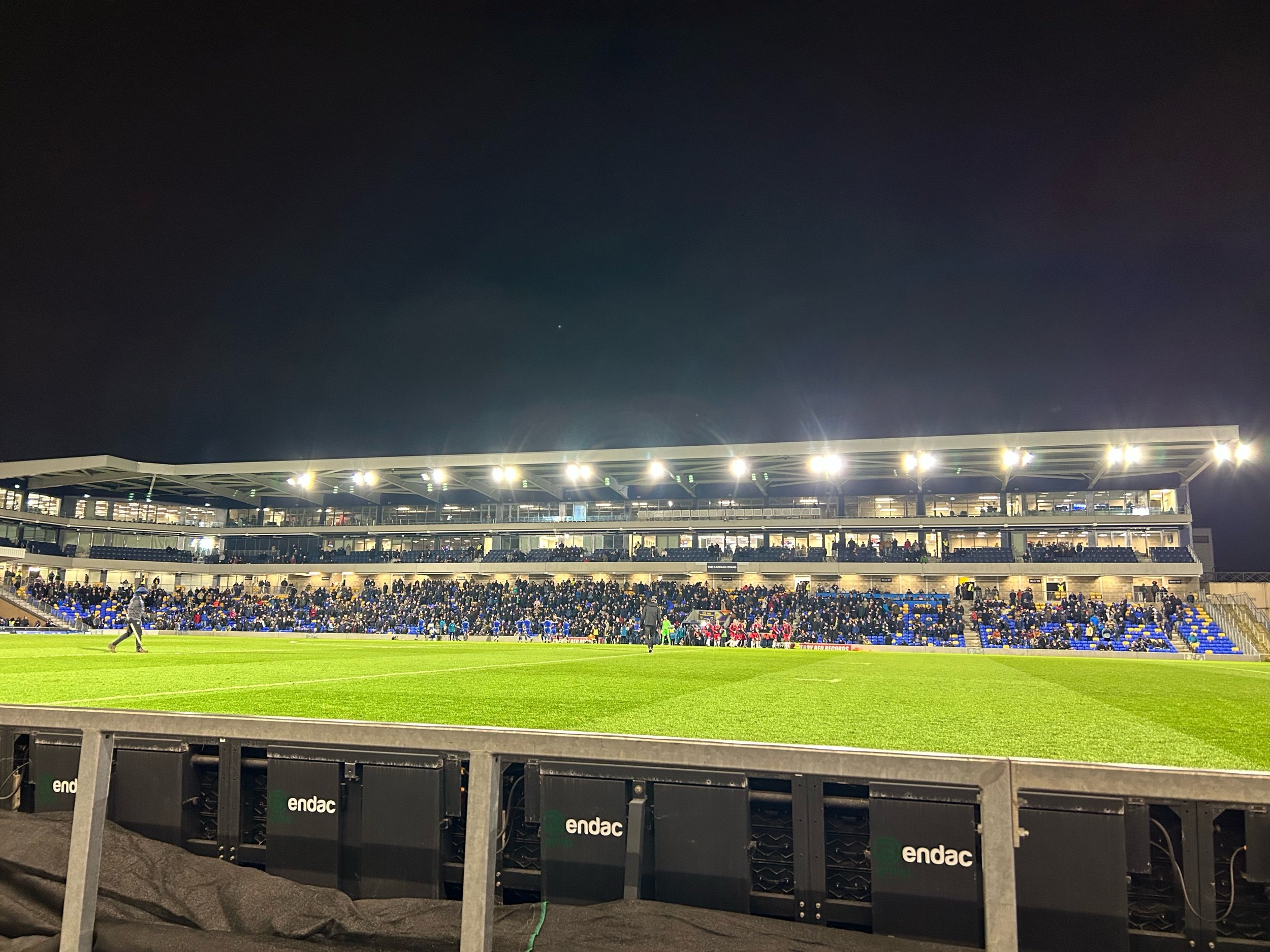

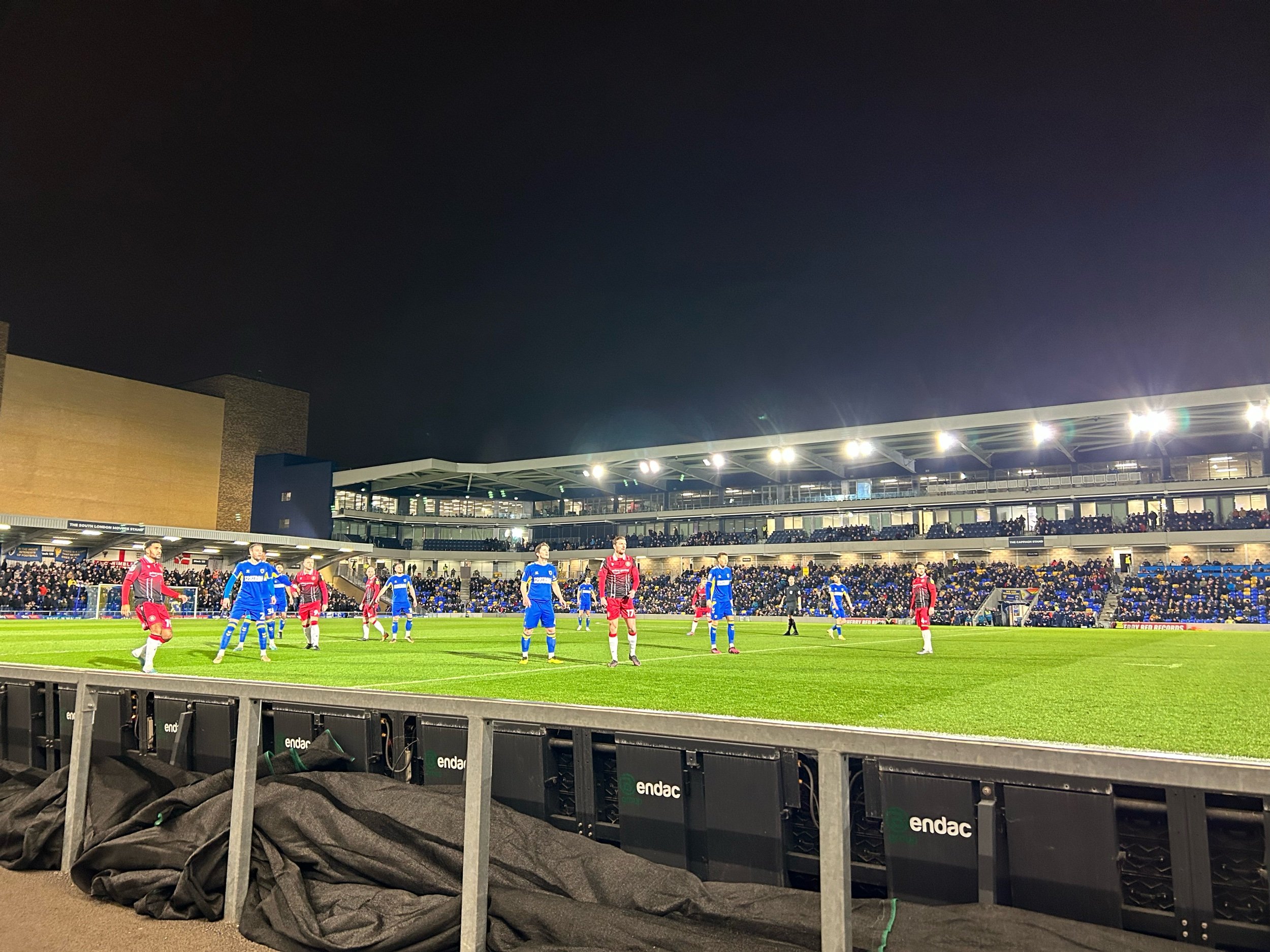
Stevenage came out much stronger in the second half, and began to play on the front foot. After a free kick was saved, they recycled the ball well to force a corner. From that particular set-piece, they found an equaliser, thanks to some pretty awful defending from the home side. AFC Wimbledon were still setting themselves up to defend the corner when Stevenage took it quickly. When the ball was delivered into the box, captain Carl Piergianni was left completely isolated to guide a header into the bottom corner.
With the equalier, the away side began to look more like the third placed team that they were, and had a second goal a few minutes later. Poor defending seemed to be the order of the night, as Stevenage made it 2-1 with a scruffy goal. After a low ball was sent in to the penalty area wasn’t properly dealt with, the ball seemed to squirm under the goalkeeper after a final touch by either a Stevenage attacker or a Wimbledon defender.
This should have allowed the visitors the platform to see the game out, but AFC Wimbledon were back on level terms thanks to a well-worked goal. After patiently keeping the ball, they eventually played it into the box where Al-Hamadi got his second goal of the night, at the second time of asking. His initial shot crashed back off the bar, but fell fortunately back at his feet to smash into the roof of the net.
The drama was not to be over, as Stevenage grabbed a late winner. Once again, Wimbledon will be furious with their defending, as somehow the ball fell to Luke Norris at the back post, who was allowed the time and space to set himself to drill his shot into the far corner to put the visitors back into the lead.
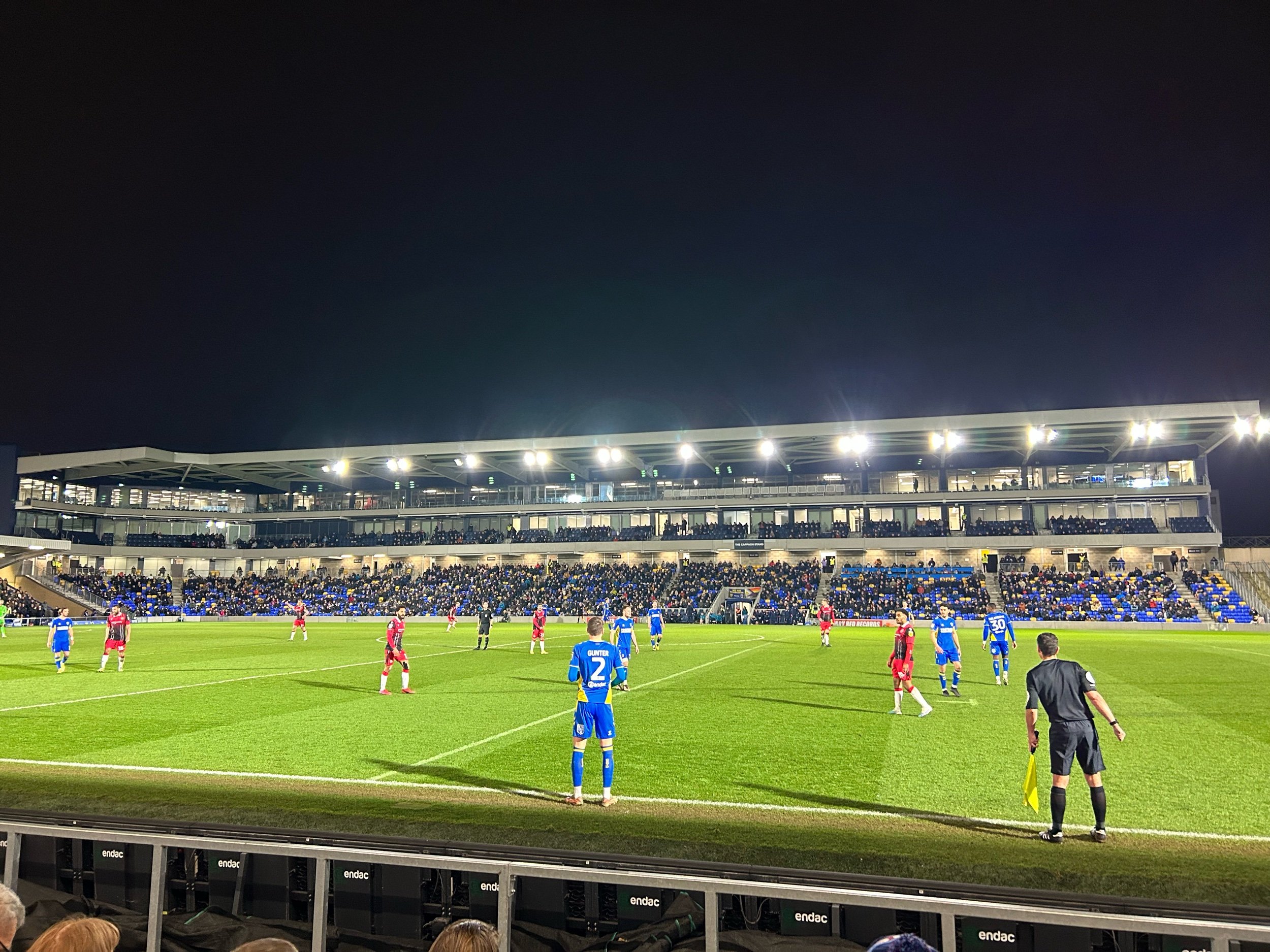

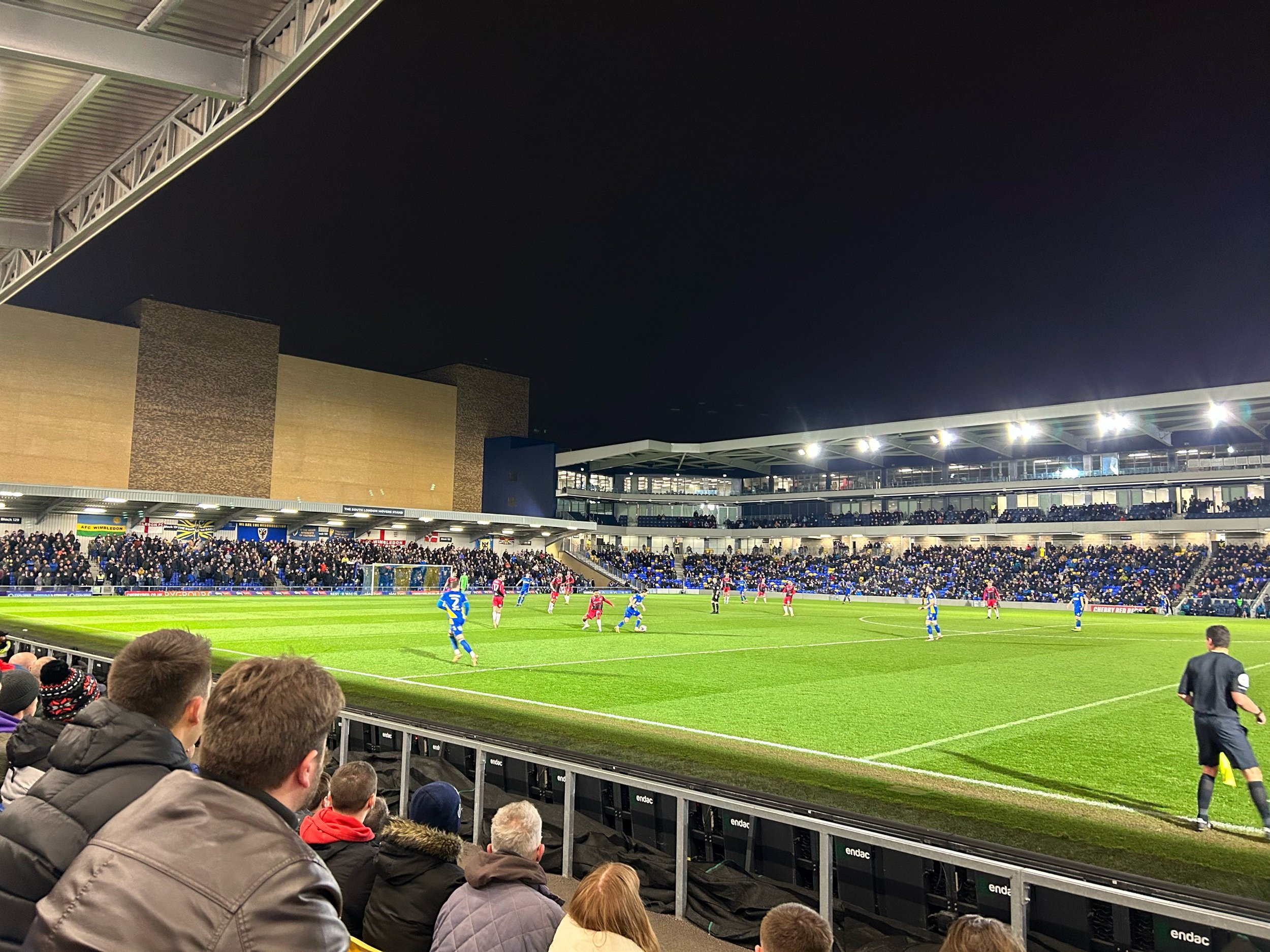
The game ended 3-2 to Stevenage, which tells the story of how topsy-turvy the game was. The second half was incredibly dramatic, almost making my £27 entry fee worthwhile! The better team won in the end, but it does not mean that Wimbledon were terrible. Both sides will be looking long and hard at the goals they conceded and attempt to rectify some of the mistakes that were evident, however some of the attacking play, especially the patient and well-organised build up for Wimbledon’s second goal should be praised.
Although I had heard some rather negative reviews of the Cherry Red Records Stadium beforehand, I was actually rather impressed by it. The main stand is excellently designed, and the rest of the ground is simple, yet ideal for the level of football that the club play at, and are likely to play at in the coming years. Having earlier described the ground as a great place for families, I am still slightly bewildered by the ticket prices. I understand that visiting from Manchester means that everything in London astonished me when I came to pay for it, but I feel that tickets varying from £25-£35 for League Two football are outrageous, London or not. With fan power being the driving force that has taken the club to where they are today, it seems counter productive that you would potentially set yourselves up to price out the next generation of supporters, therefore the next generation of owners.
Final score: AFC Wimbledon 2-3 Stevenage
Attendance: 6936 (463 away)
Admission: £27
Programme: £3/Fanzine: £2


